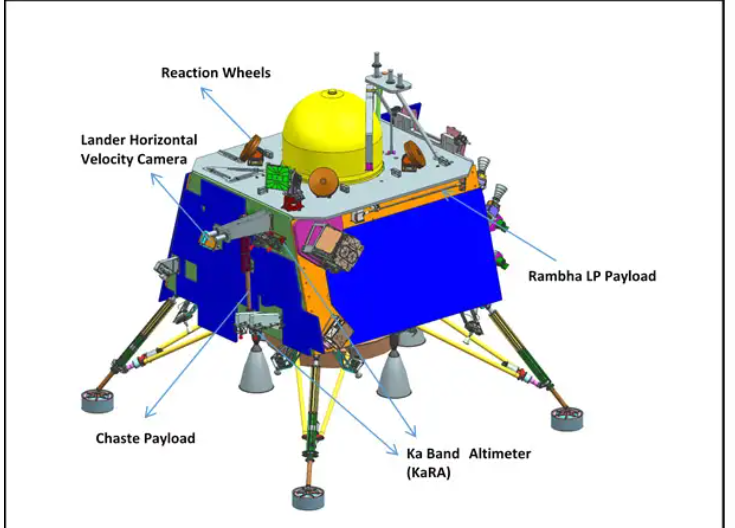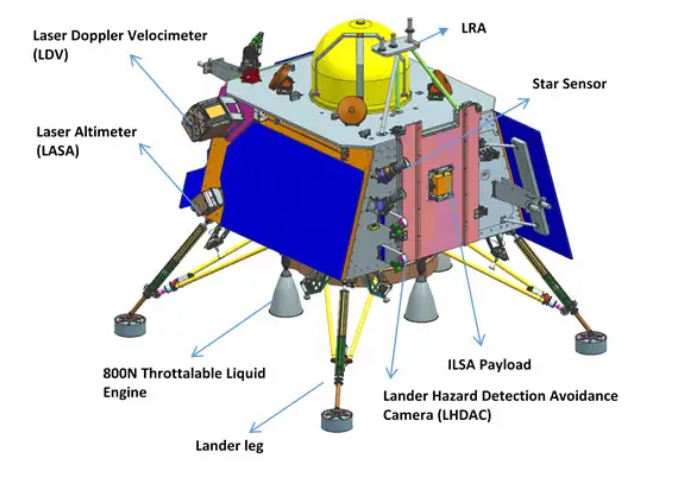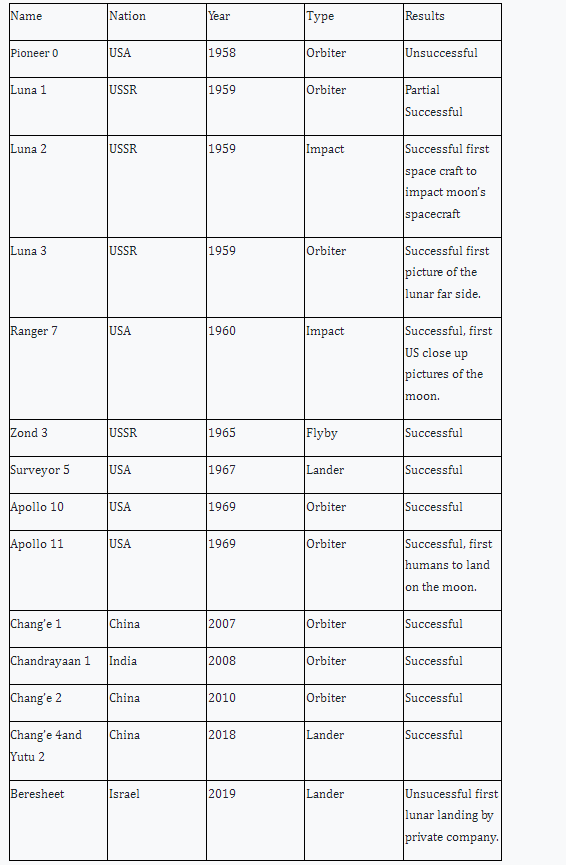Chandrayaan-3 To be launched: Chandrayaan-2 and Why it Partially Failed
Recent Context:
- Almost four years after its first unsuccessful attempt to make a spacecraft land on the Moon, Isro will launch its third moon mission, Chandrayaan-3 (Ch-3), on July 12, with the primary objective of executing a precise landing on the celestial body.
- In 2019, the lander and rover of the Chandrayaan-2 mission malfunctioned in the final moments and crash-landed, getting destroyed in the process.
- The Chandrayaan-2 mission was initiated on the day of July 22, 2019,
- Vikram lunar lander crashed on the Moon during the early hours. Its debris was later found by NASA around three months later.
- Despite the setback, the mission wasn’t a complete failure as its Orbiter part kept on working normally and gathered a wealth of new information that added to our knowledge about the Moon and its environment.
Chandrayaan-2 Mission
- Although the most talked about objective of the Chandrayaan-2 was to demonstrate the ability to soft-land a lander and rover on the unexplored south pole of the Moon, it also had other goals.
- The objective was to “designed to expand the lunar scientific knowledge through a detailed study of topography, seismography, mineral identification and distribution, surface chemical composition, thermo-physical characteristics of topsoil and composition of the tenuous lunar atmosphere, resulting in a fresh comprehension of the Moon’s beginnings as well as its development over time.
- As in 2021, the space agency revealed that the mission’s Orbiter had produced a handsome amount of data about the Moon.
- This helped in building upon existing knowledge of the celestial body in terms of its surface, sub-surface and exosphere.
- For example, the exploration of permanently shaded regions as well as craters and boulders underneath the regolith, which is the loose deposit comprising the top surface and extending up to 3-4 meters in depth, was a significant achievement attained by the Chandrayaan-2 mission.
Issue with the Chandrayaan-2’s Vikram lander
- The landing of Vikram was targeted for a plane about 600 km from the south pole of the Moon. However, ISRO lost contact with their lander shortly before the scheduled touchdown on September 7.
- When contact was lost, it was travelling at 50 to 60 metres per second (180 to 200 km per hour). Although it was slowing down, it was not doing so at a rate that would allow it to reach the speed of 2 meters per second (7.2 kilometers per hour) that was necessary for a safe landing.
- As Vikram was designed to absorb the shock of an impact even at 5 metres/second (18 km/hr). At the rate it was decelerating, it could not even have attained a speed of 5 metres/second before touchdown. It hit the Moon at a far greater speed, damaging itself and the instruments on board.
About Chandrayaan-3 Mission:
- The objective of the Chandrayaan-3 mission, which is a continuation of the Chandrayaan-2 mission, is to demonstrate an end-to-end capability in safely landing and roving on the lunar surface. It is made up of a Land Rover and a Range Rover configuration. LVM3 will be responsible for the launch, which will take place at SDSC SHAR in Sriharikota.
- Lander payloads:
- Radio Anatomy of Moon Bound Hypersensitive ionosphere and Atmosphere (RAMBHA)
- Chandra’s Surface Thermo physical Experiment (ChaSTE)
- Instrument for Lunar Seismic Activity (ILSA)
- Laser Retroreflector Array (LRA) Rover:
- Alpha Particle X-Ray Spectrometer (APXS)
- Laser Induced Breakdown Spectroscope (LIBS) Propulsion Module:
- Spectro-polarimetry of HAbitable Planet Earth (SHAPE)
- The mission objectives of Chandrayaan-3 are:
- To demonstrate Safe and Soft Landing on Lunar Surface
- To demonstrate Rover roving on the moon and
- To conduct in-situ scientific experiments


Chandrayaan-3
- The most obvious miss was the opportunity to demonstrate the technology to make a soft landing in outer space.
- Isro scientists at the time said the accident was caused by a relatively small error that had been identified and corrected. The soon-to-be-launched Chandrayaan-3 mission will demonstrate this technology, hopefully, without any glitches.
- The lander Vikram and rover Pragyaan were carrying instruments to carry out observations on the surface. These were supposed to pick up additional information about the terrain, composition and mineralogy.
- With the support of the Orbiter, Vikram and Pragyaan would have provided two diverse sets of data that could have helped prepare a more composite picture of the Moon.

